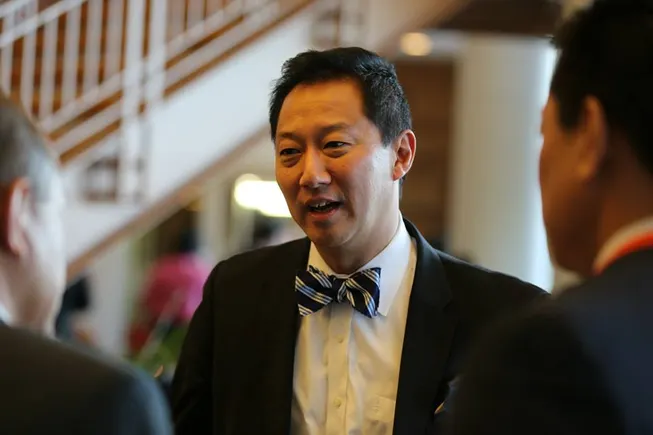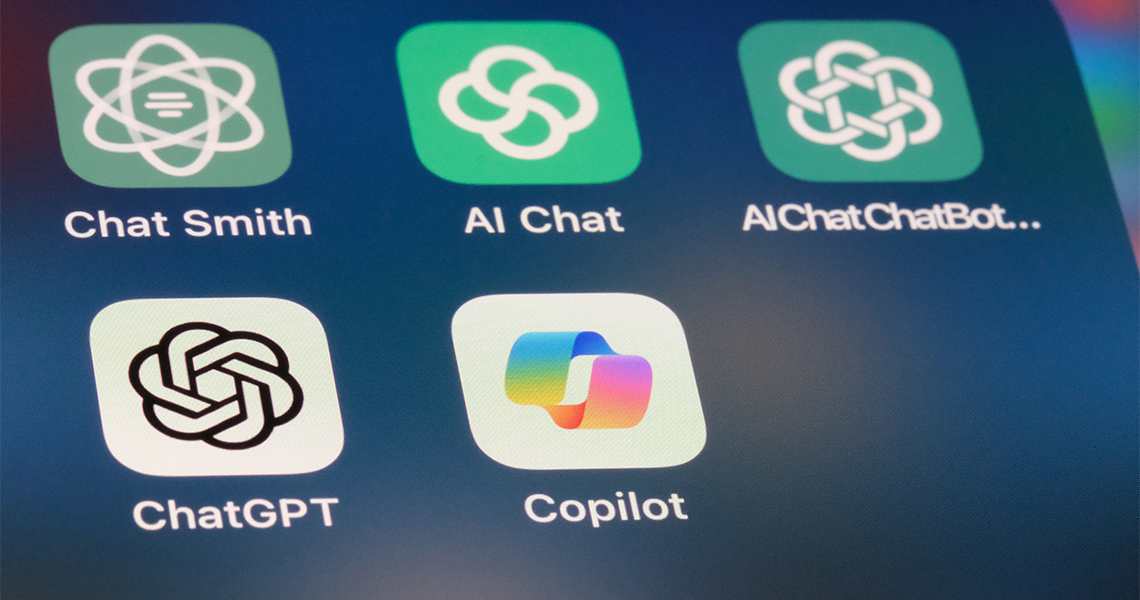

Students are saturated with content in their daily lives, and video is a huge part of what they see and consume. However, as the 2025 E-Expectations Report reveals, students are also no longer impressed by one-size-fits-all marketing. They want outreach that feels personal, relevant, and authentic (RNL, Halda, & Modern Campus, 2025). What resonates with them is personalization that shows colleges see them and not just another applicant.
And when a personalized video connects those dots, combining storytelling, emotion, and data, something powerful happens: curiosity turns into commitment.
This is clear. When students see themselves reflected in a story, they engage more deeply and feel a stronger sense of belonging.
Zhao and colleagues (2024) tested this through a creative experiment involving personalized animated films. Participants watched short stories where their moods and habits shaped the life of a little corgi trying to reach the moon. The results? Viewers not only enjoyed the video, but they also identified with it. Some even started calling the character “me.” That sense of recognition is exactly what colleges aim to spark when they send a personalized admit or financial aid video.
Banerjee et al. (2023) found similar effects in the education technology sector. When apps delivered recommendations based on individual interests, student engagement increased, especially among those who typically ignored recommendations. The message for higher education marketers is clear: those who ignore your emails or skip your events may simply be waiting for the right message at the right moment.
Finally, Deng et al. (2024) showed that personalization is not just about what content appears; it is also about how it appears. TikTok’s algorithm, for example, predicts which segments you will watch and preloads them for a frictionless experience. When it comes to personalized video for students, the same principle applies. A message that loads quickly, feels smooth, and speaks directly to their needs earns attention and trust.
You can see the full potential of personalization when colleges put it into practice, especially with the channel students use the most: video. Institutions across the country are using personalized video to make complex information clear, emotional moments unforgettable, and online discovery truly interactive. We work with our partners Allied Pixel, the pioneer in personalized video technology, to help campuses make that personalized connection that drives enrollment.
At Coastal Carolina University, affordability became an opportunity for connection. Through Personalized Financial Aid Videos (PFAVs), the university walked students and families through their aid packages in plain English and Spanish, helping them understand what college would actually cost. The outcome was remarkable:
What could have been a confusing moment became one of clarity and confidence.
Once affordability is clear, emotion takes center stage. The University of Cincinnati used Personalized Admit Hype Videos as part of its “Moments That Matter” campaign, designed to celebrate admitted students in a way that felt deeply personal.
The results spoke for themselves: over 1,200 students confirmed their enrollment after watching their personalized video. One student shared, “It made me feel like I’ve found a new home. Thank you for putting this together!” A parent commented, “This is the absolute coolest thing I’ve seen in college recruiting, and this is my third child. Well done!!!”
It is hard to imagine a clearer example of how belonging drives yield.
Before a student ever inquires, colleges like Aquinas College are using Personalized Real-Time Web Videos to create immediate engagement. Visitors to the Aquinas website can build their own video in under 30 seconds, featuring content relevant to their interests.
Over 70% of visitors choose to create their own personalized clip, an extraordinary engagement rate. Even better, the form captures names, emails, and optional phone numbers, providing the admissions team with high-quality leads while offering students a memorable first touchpoint.
These examples show that personalization is not just a creative flourish. It is a measurable driver of engagement, confidence, and enrollment.
For enrollment and marketing teams, personalized video has shifted from a novelty to a necessity. The results are too compelling to ignore. Here is what to focus on next:
When done right, personalized video meets both emotional and practical needs. It answers questions and builds confidence, but it also sparks joy, pride, and a sense of belonging. That is the sweet spot where conversion happens.
So, if you want students not just to watch, but to feel seen, do not just write it, film it. Keep it short, real, and personal. Because when a few seconds can change a student’s decision, the most powerful word in recruitment might just be their name.
Find out how personalized video can create powerful engagement at every stage of the enrollment journey. Watch our webinar, How to Ramp Up Student Engagement Through Personalized Videos, to learn how you can add personalized videos to your marketing and recruitment efforts.
You can also download the 2025 E-Expectations Trend Report to see the full findings on how today’s high-school students explore, evaluate, and choose colleges, plus what they expect from every click, video, and message.

The Post-16 education and skills white paper might not have a lot of specifics in it but it does mostly make sense.
The government’s diagnosis is that the homogeneity of sector outputs is a barrier to growth. Their view, emerging from the industrial strategy, is that it is an inefficient use of public resources to have organisations doing the same things in the same places. The ideal is specialisation where universities concentrate on the things they are best at.
There are different kinds of nudges to achieve this goal. One is the suggestion that the REF could more closely align to the government missions. The detail is not there but it is possible to see how impact could be made to be about economic growth or funding could be shifted more toward applied work. There is a suggestion that research funding should consider the potential of places (maybe that could lead to some regional multipliers who knows). And there are already announced steps around the reform on HEIF and new support for spin-outs.
All of these things might help but they will not be enough to fundamentally change the research ecosystem. If the incentives stay broadly the same researchers and universities will continue to do broadly the same things irrespective of how much the government wants more research aimed at growing the economy.
The potentially biggest reform has the smallest amount of detail. The paper states
We will incentivise this specialisation and collaboration through research funding reform. By incentivising a more strategic distribution of research activity across the sector, we can ensure that funding is used effectively and that institutions are empowered to build deep expertise in areas where they can lead. This may mean a more focused volume of research, delivered with higher-quality, better cost recovery, and stronger alignment to short- and long-term national priorities. Given the close link between research and teaching, we expect these changes to support more specialised and high quality teaching provision as well.
The implication here is that if research funding is allocated differently then providers will choose to specialise their teaching because research and teaching are linked. Before we get to whether there is a link between research funding and teaching (spoiler there is not) it is worth unpacking two other implications here.
The first is that the “strategic distribution” element will have entirely different impacts depending on what the strategy is and what the distribution mechanism is. The paper states that there could, broadly, be three kinds of providers. Teaching only, teaching with applied research, and research institutions (who presumably also do teaching.) The strategy is to allow providers to focus on their strengths but the problem is it is entirely unclear which strengths or how they will be measured. For example, there are some researchers that are doing research which is economically impactful but perhaps not the most academically ground breaking. Presumably this is not the activity which the government would wish to deprioritise but could be if measured by current metrics. It also doesn’t explain how providers with pockets of research excellence within an overall weaker research profile could maintain their research infrastructure.
The white paper suggests that the sector should focus on fewer but better funded research projects. This makes sense if the aim is to improve the cost recovery on individual research projects but improving the unit of resource through concentrating the overall allocation won’t necessarily improve financial sustainability of research generally. A strategic decision to align research funding more with the industrial strategy would leave some providers exposed. A strategic decision to invest in research potential not research performance would harm others. A focus on regions, or London, or excellence wherever it may be, would have a different impact. The distribution mechanism is a second order question to the overall strategy which has not yet dealt with some difficult trade offs
On its own terms it also seems research funding is not a good indicator of teaching specialism.
When the White Paper suggests that the government can “incentivise specialisation and collaboration through research funding reform”, it is worth asking what – if any – links there currently are between research funding and teaching provision.
There’s two ways we can look at this. The first version looks at current research income from the UK government to each provider(either directly, or via UKRI) by cost centre – and compares that to the students (FTE) associated with that cost centre within a provider.
We’re at a low resolution – this split of students isn’t filterable by level or mode of study, and finances are sometimes corrected after the initial publication (we’ve looked at 2021-22 to remove this issue). You can look at each cost centre to see if there is a relationship between the volume of government research funding and student FTE – and in all honesty there isn’t much of one in most cases.
If you think about it, that’s kind of a surprise – surely a larger department would have more of both? – but there are some providers who are clearly known for having high quality research as opposed to large numbers of students.
So to build quality into our thinking we turn to the REF results (we know that there is generally a good correlation between REF outcomes and research income).
Our problem here is that REF results are presented by unit of assessment – a subject grouping that maps cleanly neither to cost centres or to the CAH hierarchy used more commonly in student data (for more on the wild world of subject classifications, DK has you covered). This is by design of course – an academic with training in biosciences may well live in the biosciences department and the biosciences cost centre, but there is nothing to stop them researching how biosciences is taught (outputs of which might be returned to the Education cost centre).
What has been done here is a custom mapping at CAH3 level between subjects students are studying and REF2021 submissions – the axis are student headcount (you can filter by mode and level, and choose whichever academic year you fancy looking at) against the FTE of staff submitted to REF2021 – with a darker blue blob showing a greater proportion of the submission rated as 4* in the REF (there’s a filter at the bottom if you want to look at just high performing departments).
Again, correlations are very hard to come by (if you want you can look at a chart for a single provider across all units of assessment). It’s almost as if research doesn’t bring in money that can cross-subsidise teaching, which will come as no surprise to anyone who has ever worked in higher education.
The government’s vision for higher education is clear. Universities should specialise and universities that focus on economic growth should be rewarded. The mechanisms to achieve it feel, frankly, like a mix of things that have already been announced and new measures that are divorced from the reality of the financial incentives universities work under.
The white paper has assiduously ducked laying out some of the trade-offs and losers in the new system. Without this the government cannot set priorities and if it does not move some of the underlying incentives on student funding, regional funding distribution, greater devolution, supply-side spending like Freeports, staff reward and recognition, student number allocations, or the myriad of things that make up the basis of the university funding settlement, it has little hope of achieving its goals in specialisation or growth.

International education was growing. The United States hosted over 1.1 million international students in 2023/24, an all-time high and up 7% on the previous period. Graduate enrolments and OPT participation also reached record levels.
However, due to an unpredictable macro-environment, forecasts indicate that the US could expect a decrease of up to 40% in new international student enrolments this year, resulting in a potential loss of USD$7 billion to the US economy.
At the same time, budgets are tight. The loss of international student revenue can affect institutions in the U.S. Along with these losses, there are cuts in federal grants, with over 4,000 grants reduced to fewer than 600 institutions across the 50 states.
The result is an education sector that needs reliable revenue and an improved student financial experience.
Why instalments are becoming the default
Students are funding their degrees from multiple sources while managing the rising costs of living. In TouchNet’s 2025 Student Financial Experience Report, 55 percent of US students juggle three or more funding sources, 82 percent say financial tasks require moderate to high effort, and half of the international students surveyed stated that positive payment experiences with institutions had a positive effect on them.
That illustrates the importance of offering students flexible, self-service tools. By streamlining payment processes, offering alternative payment methods, and, most importantly, providing payment flexibility, those financial tasks that cause students stress can be alleviated. In turn, those positive experiences will lead to better-engaged students, who can worry about their financial standings a little bit less.
Apart from providing financial security and a positive experience to students, payment plans are crucial to an institution’s survival. International students contributed an estimated USD$43.8bn to the US economy in 2023/24. Protecting that value means eliminating friction from the invoicing, payment, and reconciliation processes across borders and currencies.
From annual to monthly payments: what institutions gain
Moving from one or two large value annual due dates to monthly, quarterly, or term-aligned schedules spreads risk for students in a turbulent macroeconomic environment and smooths cash flow for institutions.
That shift helps students plan around scholarship disbursements, loans, family support, and part-time work, while giving bursar teams earlier visibility of potential issues.
The outcome is higher on-time payment rates, fewer past-due balances, and a better student experience.
What to demand from a payments partner
If you are rethinking fee schedules, the partner you choose matters.
This way, students who need to pay you can complete the financial transaction in the most convenient way for them. A bonus is when the provider uses local payment rails to complete the transaction, helping you benefit from reduced intermediary fees.
On the other hand, students and parents (or anyone paying the tuition) can view the status of their payments, balances, sign up for payment plans, and check their standings without needing to raise support tickets.
Furthermore, if a student drops out of their course six months into their first year and has made seven payments for their tuition, it should be a simple process to refund them any amount they’re due. Choose a provider with capabilities to do so to save your team headaches.
How TransferMate helps you make monthly instalments work
TransferMate’s education solutions were built for the new reality we’re living through. Providing choice across instalments and payment methods is at the forefront of our platform, and is specifically designed to meet institutional control requirements and student expectations.
Here’s what you can expect from our integration:
The strategy that pays back
The plain facts are simple, even if it is a hard truth to swallow.
Institutions do not control the macro environment.
But what you do control is how easy it is for students to enrol and pay. The sector is moving from annual lump sums to monthly and quarterly instalments because it improves affordability, supports retention, and strengthens cash flow.
Being part of that movement is as easy as reaching out to a payments partner and getting started.
Want to learn more about how TransferMate configures instalment options for your institution? Get in touch with our team today.

About the author: Thomas Butler is head of education at TransferMate, driving innovation in payment solutions for the education sector. He leads teams focused on developing seamless, secure systems that simplify how institutions, platforms, and students send and receive international payments. Under his guidance, TransferMate powers collections in over 140 currencies across more than 200 countries, with fully regulated infrastructure and integrations via APIs, white-label platforms, and embedded solutions. Thomas works with both educational institutions and software partners to reduce bank fees, improve FX rates, automate reconciliation, cut administration, and enhance transparency, all to improve the payment experience and financial operations in education globally.

Earlier this week the presidents of three of the formerly regional accreditors—Middle States, SACSCOC and WASC—hosted a webinar on AI and transfer credit. I watched, as did several colleagues; both topics are important, and since we’re covered by Middle States, it’s useful to know where its policies and expectations are heading. Credit loss upon transfer is a chronic issue on which accreditors have historically been muted; serious attention would be welcome.
It was … frustrating My colleagues and I tried afterward to isolate actual concrete changes and came away befuddled. It reminded me a bit of “strategic plans” that say things like, “We will achieve excellence.” OK, but that’s neither a strategy nor a plan. At best, it’s an intention.
Heather Perfetti, the president of MSCHE, stated that she doesn’t want accreditors to be seen as barriers to credit transfer; if anything, they’re urging a shift in the burden of proof for credit transfer from yes to no. That’s good, as far as it goes, but the key word is “urging.” Urging is not requiring. Kay McClenney famously noted that “students don’t do optional.” I’ve seen too many cases of universities not doing optional when it comes to accepting credits in transfer.
The stated reason is usually something about standards; the real reason is economic self-interest. Departments don’t want to “give away” any more credits than they have to, so they don’t. That changes only when orders come down from above—say, from a provost’s office because the college is desperate for enrollment, or from a State Legislature that got sick of shenanigans and passed a law, like MassTransfer in Massachusetts. Accreditors could conceivably play that role—it would be naïve to think that outcomes assessment would have gained the momentum it did without pressure from accreditors—but they’d have to put some force behind it. I didn’t catch any mention of that.
To be fair to the accreditors, that’s much harder now that they’ve lost their de facto regional monopolies. The regional accreditors are membership-driven organizations whose imprimatur opens up access to federal financial aid. Membership-driven organizations aren’t normally tough on their members, but the unusual combination of regional monopoly and access to federal financial aid gave them the leverage to push their members harder than they otherwise could. That didn’t always work out ideally—some colleges went bankrupt having recently satisfied accreditors that they were financially sound—but the structure made it at least possible for the accreditors to carry real weight.
The first Trump administration broke the regional monopolies and opened the door to alternative accreditors. Now there’s an entirely new body emerging in SACS’s territory, and colleges are empowered to shop around. When members can shop around for more lenient or ideologically aligned accreditors, it becomes more difficult for the legacy accreditors to issue mandates.
The new preference—I can’t call it a mandate or a policy—seems to mean that colleges should “default to yes” on credit transfer, in the absence of evidence that they shouldn’t. It wasn’t immediately clear what would constitute evidence that they shouldn’t. Lack of regional accreditation isn’t supposed to be dispositive in itself. Over time, a college could track success rates of students in Calc II who transferred in Calc I from College X, and if the rate were low enough, they could cite that. But that would require first allowing everything in for several years to build a track record; after that, the politics of saying no would be more complicated.
The connection to AI, as near as I could tell, was that it would allow colleges to assess transcripts and issue transfer decisions much more quickly at scale. That would actually help. As one of the presidents put it—I should have written it down, but alas—the current system works like trading in a car for a new one but not being told the value of your trade-in until you’ve had the new one for a few months. It’s not consumer-friendly at all. If transfer credit decisions could be issued at the same time as admission and financial aid decisions, students would be much more able to make informed decisions. I have concerns about AI hallucinations in this context (and many others), but if defaulting to yes is built in, it might work at least as well as the current system.
So, I’ll give this shift a cheer and a half out of three. The direction is positive; I just hope they can find a way to move from an intention to a plan.

This blog was kindly authored by Rachel Hewitt, Chief Executive, MillionPlus, the Association of Modern Universities
Every year, surveys like HEPI’s Student Academic Experience Survey offer a snapshot of university life. But behind the charts and statistics is a changing story about what higher education looks like, especially at modern universities. These institutions are showing that studying in 2025 rarely follows a single, conventional route.
Modern universities have long been known for their openness and ties to local communities. Now, they are also shaping a very different kind of student journey—one that does not always follow the traditional three-year residential degree. Instead, it reflects the realities of a diverse student body: people working while studying, commuting from home, caring for family, or building new careers later in life.
For many students at modern universities, higher education is less about stepping away from life for three years and more about weaving learning into a busy, complicated existence. As the Student Academic Experience Survey shows, almost half (45%) of modern university students are in paid employment—often out of necessity, not choice. Many are parents, carers, or career-changers. For these students, study isn’t a bubble; it’s one delicate strand in a web of responsibilities.
For some, this results in a very different kind of campus life: less time spent living in halls, more commuting (40% travel over 10 miles) and a stronger pull between work, family and academic priorities.
While financial pressures for students and wider society remain acute—38% of students who need work can’t find it, and 30% say cost-of-living concerns affect their ability to focus—modern universities are adapting their teaching and support models. Many now offer blended delivery, intensive block teaching, alongside established flexible provision such as degree apprenticeships and part-time study. These approaches allow students to earn, care, and live at home while progressing towards qualifications.
This is a student population that remains deeply committed to learning. Despite all the pressures, modern university students show up, participate, and persist. Approaching a fifth of students has caring responsibilities, comfortably higher than their peers at older institutions. Some 40% report that their tutors actively encourage class discussion and help them explore personal areas of interest. They value that their feedback is accessible and constructive, helping them improve and stay on track.
While their circumstances may be more complex, their commitment to learning is strong. These students also place a high value on being heard and report a sense of belonging, often shaped by feeling that their opinions matter and that support services are there when needed. These aren’t just “nice to haves”—they’re essential in a system where so many are juggling competing demands.
Their experience may look different from the “classic” university model, but it is no less valid.
For institutions, the challenge is that this is all happening against a backdrop of unsustainable finances, with their resources being stretched increasingly thinly.
While much of the conversation around student experience rightly focuses on individuals, universities across the sector are also under growing pressure, the reasons for which are by now well established. Modern universities typically receive less research funding and fewer philanthropic donations than many of their older counterparts, with their international student income potentially next on the chopping block if the government follows through on its proposed levy.
They also face higher staff costs, with significant increases in pensions cost (recent changes to the Teachers’ Pension Scheme which modern universities are bound to offer are estimated to cost the sector £125 million per year) and this year are facing an 11% fall in Office for Students recurrent grants, compared to 5% at pre-92s. This is coupled with recent defunding of Level 7 apprenticeships, provision into which many modern universities had put significant investment to support the skills system. Yet they educate a high proportion of students from disadvantaged or underrepresented backgrounds, often with greater support needs.
Balancing quality education with constrained budgets is becoming increasingly unsustainable. The financial model that underpins higher education in the UK is coming apart at the seams. These universities are doing vital work—widening participation, supporting local economies, and offering first and second chances—but they’re being asked to do more with less.
The current system is simply not fit for purpose. If modern universities are to continue serving their students effectively—and if those students are to thrive—there needs to be a shift in how higher education is funded. This could mean more targeted government support, reforms to tuition fee and maintenance structures, or increased investment in student support services. In order to maintain a world-leading higher education sector, vital to help meet the government’s stated goals, there must be a clear strategy for higher education from Westminster and Holyrood. The sector waits in hope for the government’s promised HE reform package.
Without change, inequality will be further entrenched and institutions that play a crucial role in social mobility will be immeasurably lessened. In 2025, with the support of their institutions, modern university students are doing everything they can to succeed. It’s time the system worked just as hard for them.

In early June, the governing board of Florida’s university system surprised the higher education sector when it rejected Santa Ono as the sole finalist for the presidency of the University of Florida. Ono had faced backlash — led by conservative activist Christopher Rufo — over his past embrace of diversity, equity and inclusion efforts while head of the University of Michigan.
Later that month, University of Virginia President Jim Ryan abruptly stepped down after the U.S. Department of Justice pressured him to resign over the institution’s diversity efforts. Ryan said he wouldn’t fight to keep his job when staying would have cost the institution research funding and student aid and hurt international students.
The duties of the modern college president extend far beyond keeping their institutions viable. For decades, how the head of a college is selected and who fills the position has been steadily shifting. Now, whoever assumes the role will likely take vitriol from both the public and policymakers.
James Finkelstein, professor emeritus at George Mason University’s public policy school, researches leadership in higher education. We spoke with him about the changing role of the college president, the increased influence a presidency faces from both the political and private sectors and what that means for higher ed in the long run.
This interview has been edited for length and clarity.

James Finkelstein, professor emeritus at George Mason University
Permission granted by Judith Wilde
JAMES FINKELSTEIN: The traditional route would start with becoming an assistant professor. You get tenure next, and then you may start to move up the administrative ranks. The most common path was to go from provost to president. For now, that’s still the most common path, but it’s on the decline.
The problem is, provosts don’t fundraise. Deans do. And the No. 1 qualification that a board now looks for in a university president is their ability to raise money.
My colleague, Judith Wilde, and I have studied this process extensively, and boards are increasingly relying on executive search firms.
We found that only 2% or 3% of presidential classified ads mentioned a search firm in 1975. Today, it’s almost 100%. And based on the data, that change has also correlated with the beginning of the decline in the length of university presidents’ tenure.
Search firms do the initial screening and determine for the board which candidates are really viable. But very few of the search firm senior executives have any real experience in higher education and their No. 1 responsibility as fiduciaries is to return profit to investors.
Yes. People tend to look for candidates who look like them. And boards are not primarily made up of academics — the only thing most board members know about a university is that they got a degree from one. You’re seeing a lot more political types on the boards, as is the case in Virginia, or corporate types.
It’s interesting, corporations don’t turn to universities for their leadership. They don’t select a college president to run them. The former president of TIAA [Clifton Wharton Jr.] was the only university president to become a CEO of a Fortune 500 company — and he led a company designed to serve universities.
But many universities, at least 10% or so, will select a corporate executive to lead them.
If boards expect university presidents to behave more like corporate executives than leaders of an educational, social and cultural institution — someone who serves the public — then the next generation of university leadership is going to look very different. You’re going to see a different kind of person be not only sought after but interested in these jobs because they think they can take their private sector skill set directly into higher ed.
When I was an undergraduate, the university president probably wore a tweed sport coat with leather patches on the elbows. And the patches weren’t there to make a style statement; it’s because the elbows were worn out. If he had a car — and it was far and away “he” when I was in school — it was a car from the university’s car pool that was several years old.
And in the past, presidents maintained some academic interests. They taught. They were visible on campus.
Now, university presidents drive expensive cars and are more likely to associate with people outside the university than faculty inside the university.
Our sector does not enjoy the reputation with the public that it used to. There are all sorts of questions now about the value of a college degree. People generally think faculty get paid a lot of money and don’t do very much.
More than anything, presidents today are facing the question of if there is a way to win back that trust.
Ono was targeted by the Chris Rufo machine. You can go back and read Rufo’s interview with Politico and listen to his interview with The New York Times — he’s very public about his strategy to delegitimize leaders in higher ed. His team made a decision early on that they wanted one of their own in Florida. And Ono wasn’t it.
Having watched the entire governing board meeting in Florida, my professional assessment is that I’ve never seen a president or someone of Ono’s stature so ill-prepared and give so poor a performance on every level.
Whoever prepared him, didn’t. And if they did, they weren’t preparing him for the right thing. It was much like what happened to the college presidents who testified at congressional committee hearings. Ono wasn’t completely prepared that he was going to be essentially cross-examined by a former state legislator.
About 75% of presidents are what we call one-and-done — they report they’ll hold one presidency, and that’s more than enough. The Gordon Gees of the world are the exception, not the rule.
Ono was, in my view, the modern-day equivalent of [former West Virginia University President] Gordon Gee. He’s the professional president who developed a public persona. He developed it at the University of Cincinnati, refined it at the University of British Columbia, and then brought it to Michigan.
But I’ve talked to people at Cincinnati and Michigan. The truth of the matter is, he wasn’t well-thought of by the faculty. And he burned out very quickly in Michigan.
Ono shouldn’t be the model for the modern university president. Personally, I don’t think that he’s going to get another presidency after the Florida situation, at least not for a while.
Who the president is makes a difference. They set the tone of the institution in many ways. But presidents today can exercise less independent leadership than they did in the past — they’re being put on a shorter and shorter leash.
There are so many different constituencies that they’re having to serve, and a lot of those constituencies are in conflict with each other.
Some presidents are engaging in what people call anticipatory compliance.
“In order to avoid these conflicts,” the thinking goes, “I’m going to get one step ahead.” Sadly, what that means is that when the board intervenes, they want even more.
I think for many serious potential candidates, the answer is yes. It doesn’t matter whether you’re being paid $1 million. Or if you have two country club memberships, a big car, a big house and staff, and all of that. These jobs have always been 24/7, 365. And the scrutiny is exponentially worse now.
The real question is: Who’s going to want these jobs? That’s part of the plan of critics of higher education. They want to drive people out so they can replicate what they’re doing in Florida and appoint political loyalists who have no experience in higher education.
Even though conservatives are critical of what they see as judicial activism, they have been extraordinarily active on college boards, working to influence curriculum and promotions and tenure.
The current climate changes things for all trustees, even those who don’t align with this thinking. Regardless of their backgrounds, no board will want to appoint a president who is going to put at risk all of their research funding. And the Trump administration has shown that it is willing to use any lever it has to bring these institutions under its thumb. Look how quickly Jim Ryan was gone from UVA.
Take Jim Ryan as an example. He’s 58 years old.
I assume the terms of his contract were renegotiated when he left, but based on my analysis of his 2022 contract, the university has a future liability of almost $17 million to him. He would actuarially retire from teaching in 15 years, and in 2038, his base salary would be over $1 million a year for teaching at most two courses a semester.
The people who are actually doing most of the teaching at UVA in 2038 won’t be tenured or tenure track. They will be contingent faculty who are barely able to scrape together a living.
If you put $10 million in a scholarship fund at UVA, would that be a better investment than keeping Ryan on the faculty? The answer is a no-brainer.

Since January, President Donald Trump has taken countless steps to transform the nation’s colleges and universities. His administration has cut scientific and medical research, ended efforts to promote diversity equity and inclusion (DEI), introduced newly aggressive policies on loan repayment, revoked visas for international students, and more. While Trump’s battles with Harvard and Columbia have received the most attention, the administration’s actions have had consequences far beyond those two universities.
We want to know how the Trump administration is affecting higher education and life on your campus. What, if any, changes are you seeing at your college or university because of federal policy shifts? In what ways do you see higher education changing?
If you prefer, you can also email us directly at [email protected]. Contact editor Lawrie Mifflin at [email protected] or 212-678-4078. Contact editor Caroline Preston at 212-870-8965, via Signal at CarolineP.83 or on email at [email protected].
This story about higher education was produced by The Hechinger Report, a nonprofit, independent news organization focused on inequality and innovation in education. Sign up for our newsletters.

***HEPI and the UPP Foundation will host a free webinar on 4 June at 1pm on service learning, how universities can integrate community service with academic studies. Register for your place here.***
During September 2020, Studiosity launched the Professor Tracey Bretag Prize for Academic Integrity – an annual commitment to those who are advancing the understanding and implementation of academic integrity in the higher education sector, in honour of Tracey’s work as a researcher in the field of educational integrity.
Tracey was one of the world’s leading experts on academic integrity, founding the International Journal for Educational Integrity and serving as Editor-in-Chief of the Handbook of Academic Integrity. She spoke widely and publicly on the importance of universities taking a strong stand on educating their students about academic integrity and enforcing the rules with vigour and strong sanctions.
Tracey also came to work alongside the team at Studiosity, providing advice, guidance, and sharing her research at events. When asked for her permission to create an annual Academic Integrity award named in her honour, this was Tracey’s response:
I am so deeply honoured by your suggestion that I am almost speechless. Thank you so much for coming up with such a fabulous idea, and especially for putting it in my name. … Thank you again for this incredible recognition of my very small contribution to the field of academic integrity. As I work hard every day to try to demonstrate the type of bravery I’ve always advocated, this certainly gives me a great deal of comfort.
Tracey prematurely passed away on 7 October 2020. In February 2021, she was honoured posthumously with a Career Achievement Award from the Australian Awards for University Teaching.
Looking at the Award’s previous entries, we can see a clear shift in how institutions approach educational integrity:
Another change over time is certainly who and where integrity nominations are coming from – there are more dedicated institutional units for managing educational integrity now in 2025 than we saw in 2020-2021.
Tracey earned a great deal of respect globally for her evidence-based, systemic, and students-first approaches to educational integrity. It is fitting that these approaches are gaining interest and momentum in higher education at this moment. We look forward to seeing another year of evidence-based nominations, and thank our Academic Advisory Board for their time and energy once again in judging.
As senior leadership look for ways to ethically embed generative AI within their institutions, academic integrity – the original owner of the AI acronym – is paramount. And so for this year’s prize submissions, the expectation is that the 2025 shortlist will acknowledge gen-AI as part of the challenge, show evidence of impact, and help answer the question: How can the sector keep educational integrity, humanity, and learning at the heart of the student experience?
Last year, the University of Greenwich won the UK prize for their initiative ‘Integrity Matters: Nurturing a culture of integrity through situational learning and play’. Staff there designed an interactive e-learning module (available to all education institutions under licence) designed to raise awareness of academic integrity. You can learn more here.
Sharon Perera, Head of Academic and Digital Sills who led the initiative said:
We are thrilled to have been awarded the Tracey Bretag prize for advancing best practice and the impact of academic integrity in higher education. Thank you Studiosity for championing this in the sector.
At the University of Greenwich our goal is to raise awareness of the academic conventions in research and writing and to create a culture of integrity. We are doing this through our student communities – by sharing best practice and learning about the challenges we face in the GenAI era.
Academic integrity is at greater risk than ever in the age we live in, and we need to work together to celebrate integrity and authenticity.
While sharing your initiative is for the good of the sector and a personal recognition of your tireless efforts to protect and nurture academic integrity – the prize also comprises a financial reward! You can enter this year’s prize here – nominations close 30 May. Evidence might be at the level of policy, implementation, measured student or staff participation, and/or other evidence of behaviour.

AI is no longer a distant disruption. It’s already influencing how prospective students and families search, navigate, and make decisions on higher education websites. As teams responsible for delivering seamless digital experiences, we need to understand the behavioral shifts underway and how to respond strategically.
Across the institutions we support, we’re seeing early but consistent signals: users expect smarter, faster, and more personalized interactions. These changes are subtle in some places and dramatic in others. But they’re accelerating.
AI tools like Google’s Search Generative Experience (SGE), ChatGPT, and other large language models are changing how people expect to interact with information. According to a 2023 Pew Research study, 58% of U.S. adults are aware of ChatGPT, and younger audiences are among the most active users. Meanwhile, Google continues testing SGE, which presents AI-generated summaries above traditional search results.
Students are learning to type full, natural language questions — and they expect precise, context-aware responses in return. This behavior is now showing up in on-site search patterns.
Across higher ed websites, here are a few things we’re noticing:
Higher ed is hard — but you don’t have to figure it out alone. We can help you transform challenges into opportunities.
It’s important to say: AI-driven search doesn’t eliminate the need for strong site structure. Navigation menus, clear page hierarchy, and thoughtful content design still matter — a lot. Most users move fluidly between browsing and searching. What’s changing is the expectation for speed, relevance, and control.
To meet this moment, higher ed websites should focus on:
This is not a single redesign or one-time upgrade. Optimizing your site for how people actually use it needs to be a continuous process.
This should include the following:
Higher ed website performance is directly tied to enrollment growth. According to a 2024 survey conducted by UPCEA and Collegis Education to better understand the perspectives of post-baccalaureate students, 62% of respondents said not being able to easily find basic program information on the institution’s website would cause them to disengage.
The survey focuses on program preferences, delivery methods, and expectations during the inquiry and application processes and offered insights into how these preferences vary by age and degree level.
To stay competitive and relevant, institutions need to invest in both smart search experiences and a streamlined digital journey. Here are some high-level recommendations:
The future of higher ed websites isn’t just about making information accessible. It’s about making it findable, meaningful, and actionable – and being able to act fast and stay committed to this work.
Institutions that recognize how AI is already reshaping user expectations, and respond with thoughtful, strategic digital experiences, will meet today’s learners where they are and build trust for the long-term.
We’re paying close attention to these shifts and helping institutions make smart, scalable updates. If you’re rethinking how your website supports recruitment, engagement, or conversion, now is the right time to start. Collegis Education supports institutions with strategic marketing and web solutions designed to meet these evolving needs.
Let’s talk about how we can work together to future proof your web and digital experiences to best support enrollment growth for years to come.
See how your website stacks up — Contact us to request your AI Readiness Assessment.
Higher ed is evolving — don’t get left behind. Explore how Collegis can help your institution thrive.